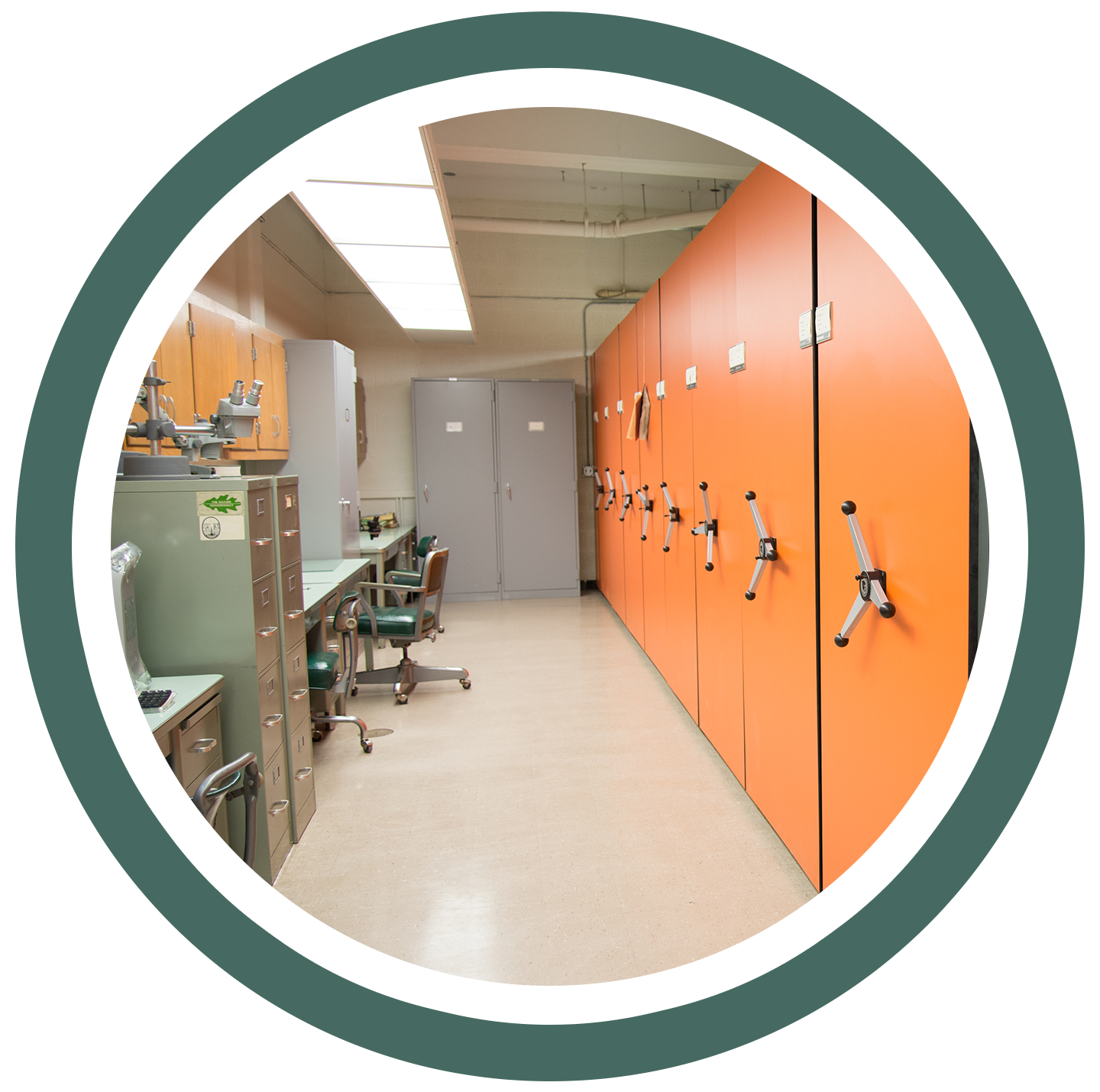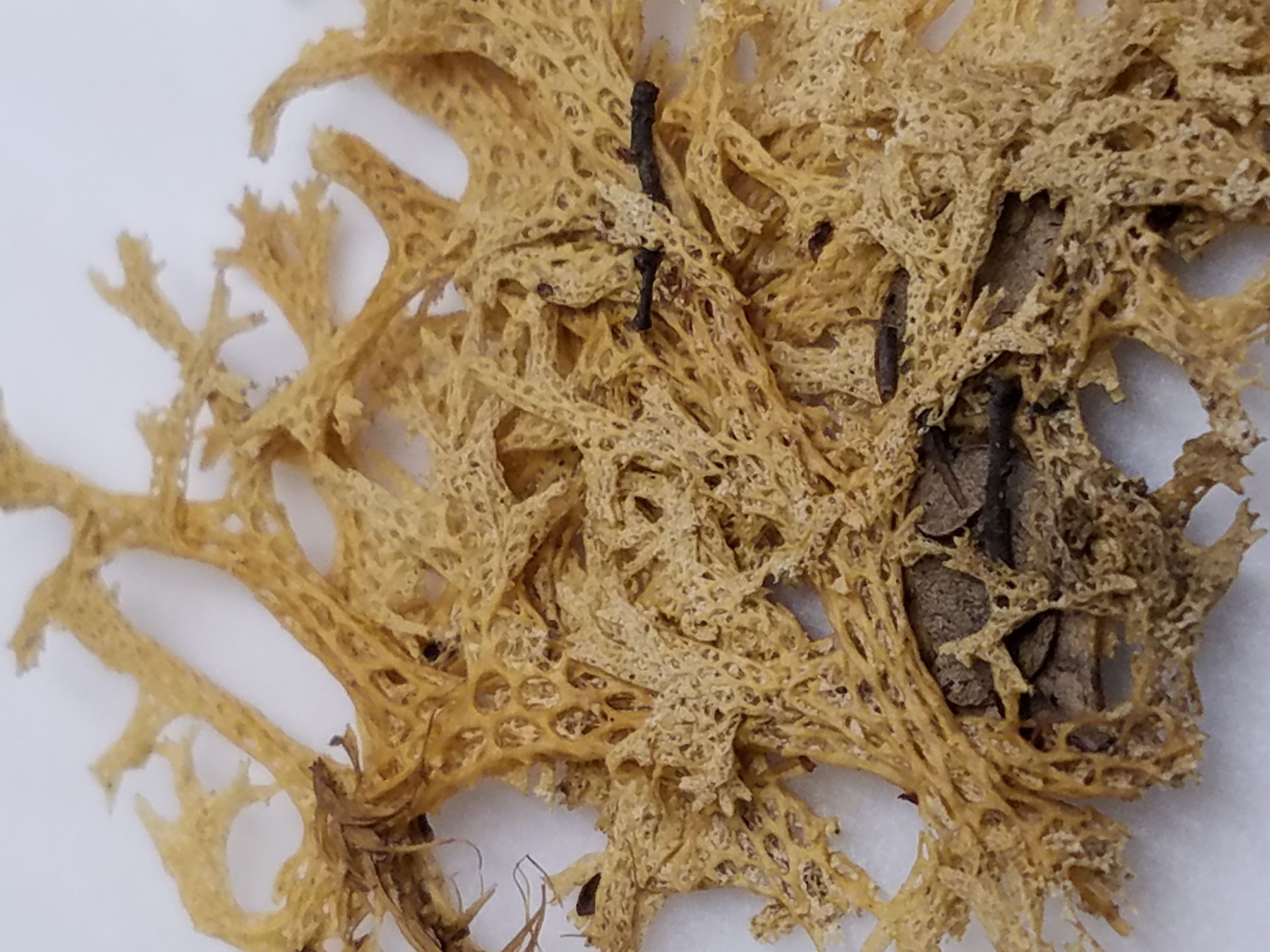What is an herbarium?

Herbaria are libraries of preserved plants, fungi, and algae and their function is to document biodiversity. Many herbaria, including the MSU Herbarium, hold botanical specimens that were collected from around the world as well as significant regional plant collections. Their contents depend on the interests and research of the people associated with each particular herbarium: For example, many of the researchers at the MSU Herbarium have studied lichens, and thus we have one of the largest lichen collections in North America.
Herbaria are resources used in research, education, and conservation. They play the dual role of documenting specimens associated with formal research so they may be used later, and providing access to previously collected specimens as researchers request them. Herbaria contain many valuable and unique collections, such as "type” specimens, the original specimens on which plants’ Latin names are based. Specimens can last for hundreds of years, and so herbaria are a catalogue of the flora of the planet over time. Herbarium collections, therefore, can illustrate how the community of plants in an area change over time and can also preserve the only records of extinct species.
Herbarium specimens are very useful tools for botanists, particularly taxonomists, who seek to describe the diversity in plant species, their form, their habitats, and their ecology. Herbaria regularly loan specimens to each other to aid investigators working on specific groups of plants. For information about how the MSU Herbarium can help with your research visit our research section. Herbarium specimens are also useful for educational purposes, because live material is not always available. The MSU Herbarium can also supply workspace for specimen-based projects as well as access to large, online data sets through our current digitization efforts. Specimens are even used in a service role to provide identifications for suspected plant poisoning cases, to aid in the identification of agricultural pests and to answer questions for local botanical enthusiasts. Read about some of the many ways herbarium specimens can be used.
Now more than ever, herbaria are keystone resources, providing a baseline that enables us to understand how our biodiversity is changing over time, and what that means for human civilization and life on earth.
Most specimens are either plants that were dried, pressed flat, and affixed to heavy archival paper, or fungal specimens that are bulkier and need to be stored in boxes or paper packets.
We also hold seed, fluid, and slide collections. While fungi and (most) algae are not plants, they are archived by herbaria because of historical precedent. When collecting a specimen, botanists frequently choose individuals that have many characteristics useful for identification (e.g. leaves, roots, flowers, and fruit). Besides the physical material, the associated data are also critical for a proper specimen. Botanists who collect specimens record many useful pieces of information about that collection event, including location, date, and their own name and collection number. Herbaria receive these dried biological records and the associated data, and organize and safeguard them. Herbarium specimens, kept free from damaging insects, water, fire, light, and extreme temperatures, can last hundreds of years. At the MSU Herbarium, our oldest specimen dates to 1801.
Herbaria are in the process of augmenting their collections by digitizing specimens; that is imaging them, transcribing the information on their labels, and then making these data available online. While digital specimens cannot replace physical ones, they are creating many new research and learning opportunities. As the number of specimens held by herbaria grows, this accumulation of data allows researchers to quickly collect tremendous amounts of data, answering big questions about biodiversity, conservation, and climate.
.jpg) Specimens collected from the same population decades apart. The specimen on the left
was used to relocate and collect the specimen on the right. Image credit: Matt Chansler.
Specimens collected from the same population decades apart. The specimen on the left
was used to relocate and collect the specimen on the right. Image credit: Matt Chansler. Lichen specimen. Image credit: Matt Chansler.
Lichen specimen. Image credit: Matt Chansler..jpg) Pinus strobus specimen collected by Mark A. Goch, 2009 from Baker Woodlot, on the MSU Campus.
Pinus strobus specimen collected by Mark A. Goch, 2009 from Baker Woodlot, on the MSU Campus.